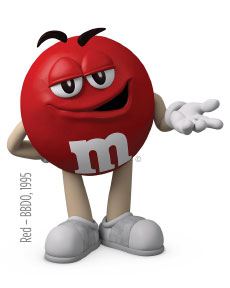insight

The Emotional Sides of Advertising
It’s more important than ever for brands to be tuned into the emotions of their target audiences.
Before you decided to pull out this old-school magazine to read, chances are you spent a little time scrolling through your social channels. It’s safe to assume there was someone who shared with the world at least one emotional reaction to something he or she saw, heard or experienced. A reaction before thinking. Emotion over logic.
Emotion plays an important role in telling your brand’s story. According to Aristotle, persuasion cannot occur in the absence of emotion. Studies have shown that emotions create powerful memories in a person’s mind and in turn, these memories motivate him or her to take action. In advertising that action is the superlative sale.
People spend money when and where they feel good.
– Walt Disney
Understanding Emotions
Psychologists have been hypothesizing, researching and studying human emotions for thousands of years. This may be fascinating stuff for some of you, but for the sake of brevity, I will avoid the details. It all boils down to this: for advertisers, there are six understood emotions — anger, disgust, fear, joy, sadness and surprise.

Anger is often used in political ads; it’s an emotion designed to make people upset and want to do something about it.

Fear is a popular choice for motivating someone to stay away from something. This was very popular in the 80’s and early 90’s for campaigns against drugs and smoking.

Sadness Sadness can be used to implore empathy and compassion. Sadness, though considered a negative emotion, can actually generate a positive response.

Disgust can be seen with pharmaceutical ads that offer a remedy for the bad feelings you may have about yourself or your health.

Joy runs the gamut of youthfulness, nostalgia, adventure, luxury, etc. Joy creates a sense of desire to buy something.

Surprise Surprise is a complex emotion that can induce positive or negative responses and challenge viewers to see things differently.
Discovering Your Brand’s Emotion
Marketing emotion is not as simple as finding an example of something you’ve seen and replicating it for your brand. Ironically, that’s an emotional response. Instead, you need to discover the emotion that makes sense for your brand and connects with your audience. To do this you will need to … gasp, implore a little logic.
At our agency, we pride ourselves on our approach: Research before strategy — strategy before action. In terms of this article, insight before logic — logic before emotion. We believe it’s imperative to do quite a bit of rational background work to help define your brand’s foundation, messaging structure and framework. This work teaches us about your target audience and helps us build an emotional story that’s authentic to your brand and, more importantly, will resonate with your consumers.

Generate EMOTION WITH a Fluent Device
A Fluent Device is character or scenario that repeats across ads, driving the creative each time — like a spokesperson or a talking candy. It’s considered one of the most powerful tactics available to a brand. Yet, a 2018 study by System1 Group and The Institute of Practitioners in Advertising (IPA) concluded that since 2016 less than 12% of brands implore this proven persuasive technique. That’s down from 41% in 1992.
When System1 probed the use of a Fluent Device theory even further, their testing showed that these creative campaigns work better because they generate greater emotional response and establish memory structures that enable fast and reliable brand recognition.
Keeping your emotions in check
Understanding our culture’s inherent need to have emotional responses and the fact that we’re battling short attention spans, the biggest threat to your marketing efforts is not knowing how your customers feel about the advertisements and materials you create. It is important for your business to be attuned to the emotional response of your target audience. You need a reliable means to measure the response so that you can keep your emotions in check. Imploring some creative testing before or after a campaign launch can help continue to guide your marketing and creative executions.
Think about your business or organization. Are customers feeling emotionally engaged and interested? Are they buying what you’re selling?
Sources:
2018 study by System1 Group






